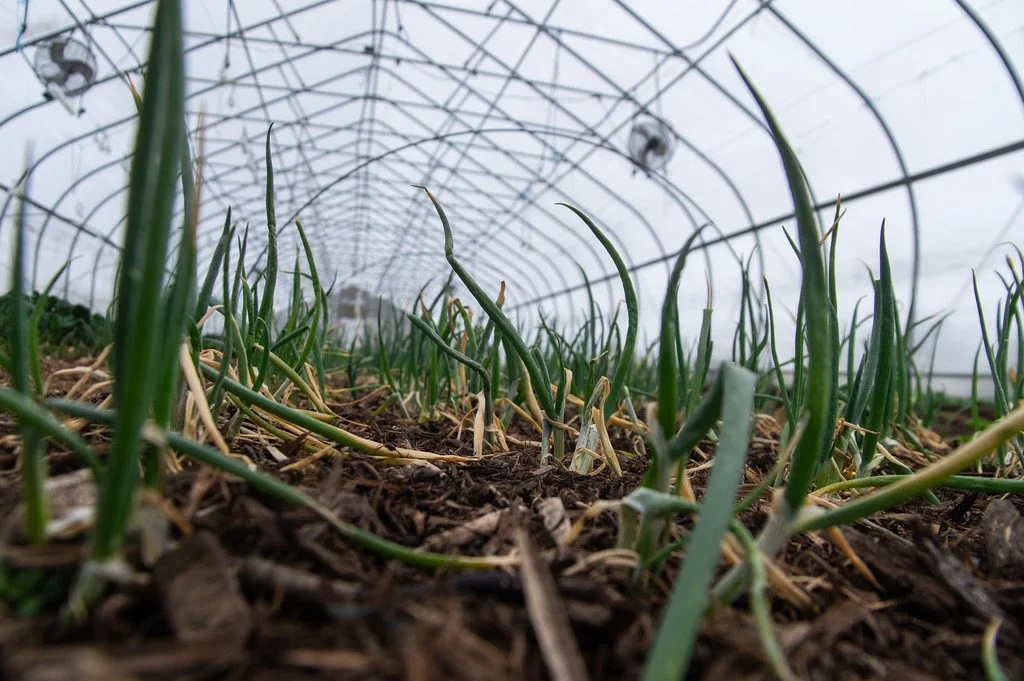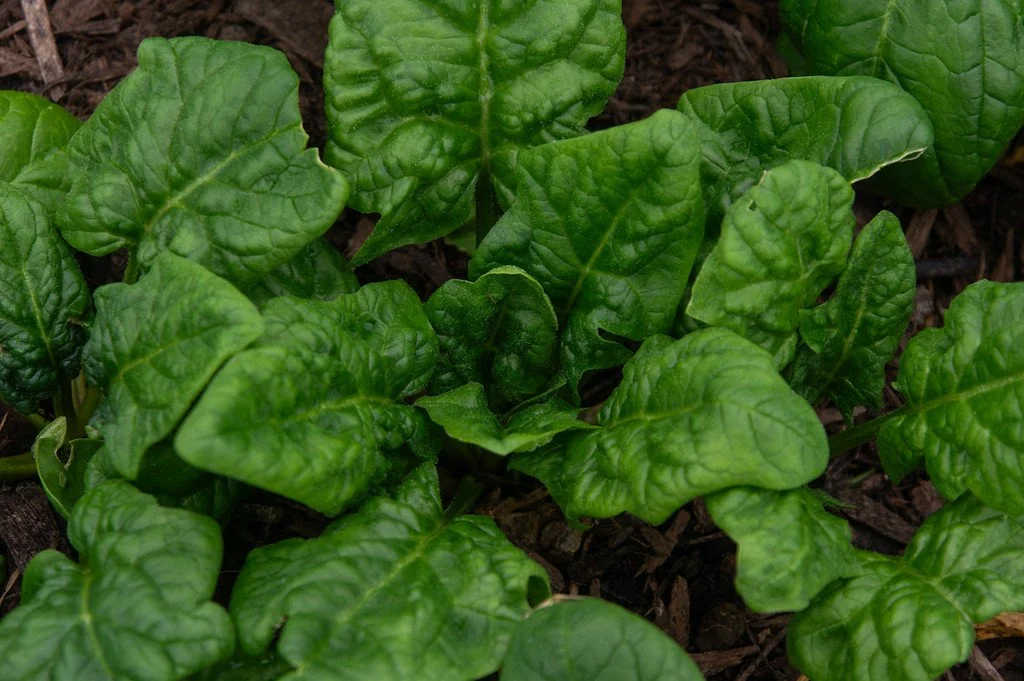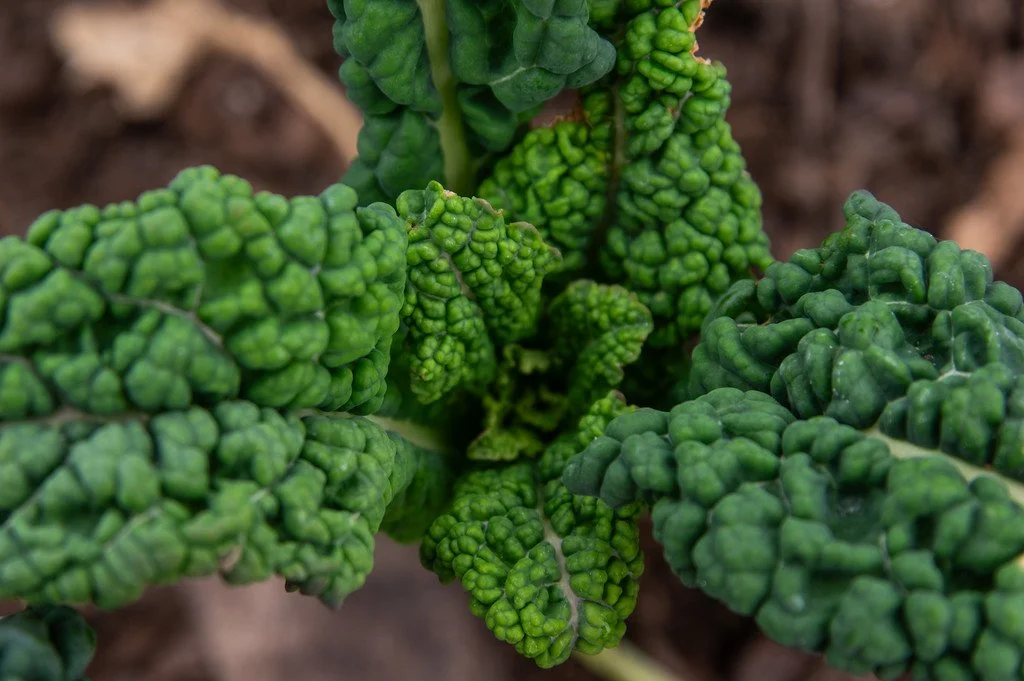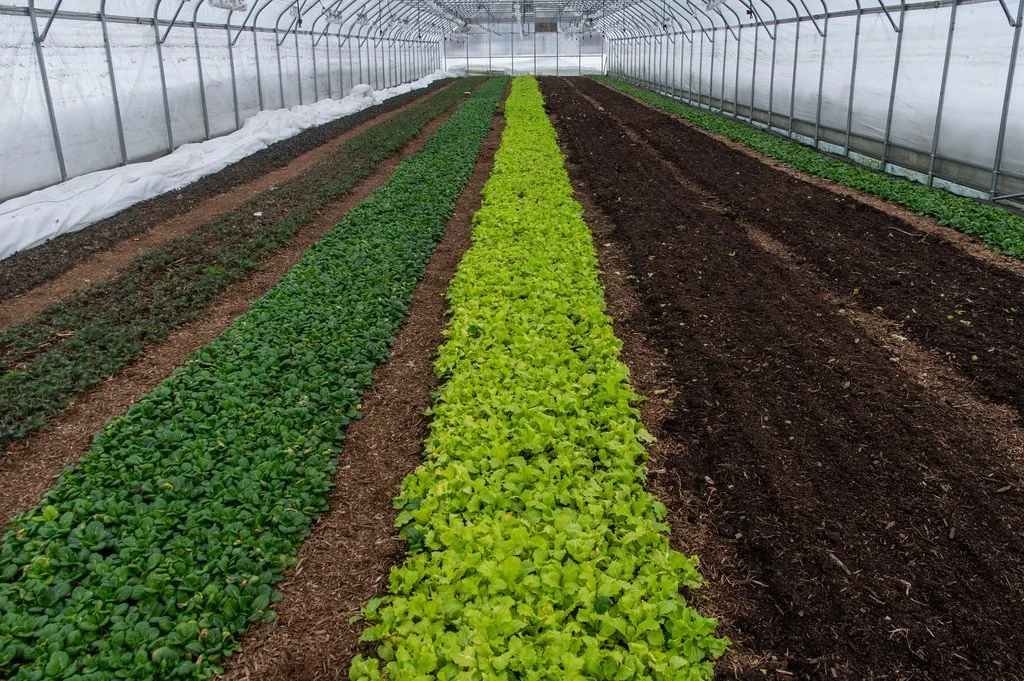2nd Week of the Spring CSA Season: Week of March 12th
later on in the spring CSA season, we will get to harvest some early scallions from the tunnel, photo by Adam Ford
This Week’s Availability
This week we will have:
Greens: spinach, claytonia, green curly kale, lacinato kale, and green cabbage
Roots: carrots, yellow potatoes, rutabaga, Gilfeather turnip, red beets, chioggia beets, watermelon radish, daikon radish
Alliums: onions, garlic, shallots, and leeks
spinach, photo by Adam Ford
Farm News
Thanks everyone for a great first CSA week! Many thanks to the Shrewsbury road crew for their excellent management of our unpaved roads in this difficult transition season of ice, snow, water, and mud. Hopefully the road will continue to keep its good condition as thawing continues this week.
In farm news, folks who read our newsletter last summer may have read that our farm was one of the early participants in the Climate Smart Farming program—an Inflation Reduction Act federally funded program—which provided some financial support to our farm for utilizing “climate smart” growing practices like mulching and no-till growing methods. Recently we learned that Climate Smart Farming is no longer funded through the federal funding freeze, so we and other farms will not get to continue to receive that support. While it was great to be a part of that program—and a wise practice for the previous administration to incentivize good stewardship of our agricultural soil resources—we are lucky that federal funding is not a dealbreaker for our farm’s viability. The way forward will be much more challenging for other farms that rely more heavily on contracts with the USDA geared towards incentivizing producers towards ecologically sound practices.
During the time that we were a part of the climate smart farming program, we did get to submit soil samples from three fields for comprehensive soil analysis. Traditional soil testing analyzes the chemistry of soil: its pH and availability of minerals like calcium, magnesium, and potassium. However, in recent years the scientific community has come to realize that soil chemistry is only one element of soil health: the physical structure of the soil and the biological community of the soil are other essential elements in healthy soil. The Cornell Assessment of Soil Health test (or CASH test), is a comprehensive soil analysis that utilizes some pioneering analytical tools to assess the health of the soil’s physical structure, and the robustness of the soil’s biological community, in addition to the chemical analysis of soil that many soil testing labs offer.
This past week the results of our CASH tests came back and across the board our farm’s soil scored extremely high. Heads up—this newsletter will now take a turn into the nerdy details of our farm’s soil analysis…duck out now if you like! One of the analyses in the CASH test is aggregate stability, which refers to the ability of soil crumbles to maintain their crumbly structure, and the air spaces between crumbles, under heavy rainfall and equipment traffic. In soils with poor aggregate stability, soil crumbles dissolve into individual grains of sand, silt, and clay and become washed away by water, and compacted with no air spaces in between. These soils are easy to see after a heavy rain, because the surface of the soil crusts over. This crust and compaction limit the ability of the soil to rapidly infiltrate water, leading to runoff and erosion during heavy rain, and it limits the exchange of atmospheric gases through the pore spaces of the soil, which is needed for a fully functional soil microbial community. In short, soil with better aggregate stability can function effectively at supporting healthy plant growth in a wider range of weather extremes—heavy rain, drought, heat spells—than soil with poor aggregate stability. In general, soil stewards can increase aggregate stability by growing lots of living plants in uncompacted soil, and will diminish aggregate stability through excessive tillage and exposing bare soil to the elements.
Look ma, straight A’s!
Soil respiration is another analysis from the CASH test, and it is just what it sounds like…a measurement of how much the soil is breathing. Soil is alive, with trillions of bacteria, fungi, nematodes, protazoa, microarthropods, invertebrates…. Soil respiration measures carbon dioxide released from soil under warm moist conditions. The more carbon dioxide release, the more microbial life is active in the soil. It isn’t a “perfect” test: it doesn’t tell us anything about who is respiring in the soil, or if there is any kind of equilibrium or balance between all of the classes of microbes in the soil microbial ecosystem. But in general, it gives a sense of how much life the soil ecosystem supports. And like most healthy ecological systems, a healthy soil ecosystem is one that supports an incredible amount and diversity of cycling life. A highly living soil not only makes a complex and nuanced array of nutrients available to the plants we grow, but also provides many other valuable services to the plant community, such as supporting plants in resistance to insects and diseases. In contrast, soils with microbiology that has been diminished through excessive tillage and chemical application grow crops that tend to be nutritionally imbalanced and are especially vulnerable to pest and disease outbreak, requiring even more chemical intervention.
It’s neat to have these CASH test results to confirm what we observe in our soil since we began developing reduced tillage and mulching practices over the past few years: improved water infiltration and retention, decreasing pest and disease pressure, and really healthy, beautiful plants. It’s so rewarding to have learned ways soil management skills that increase the fertility and productive capacity of the soil that provides nourishment for all of us, and we’re grateful for all the communities that make it possible : the agricultural research and extension community, the vegetable growing community, the local community that supports the work of this farm, and the incredible community of soil life that makes all of it possible.
Have a great week!
-ESF Team: Ryan, Kara, K2, Cindy, Taylor, Leah, and Natalie (and Sky and Soraya)
This mulched field shows soil with excellent aggregation: the soil is not fluffy and powdery but forms clumps like you might find under the leaf layer in a forest soil. Soil with excellent aggregation like this can infiltrate water rapidly, resist erosion, and provide excellent air exchange for soil microbes to work symbiotically with plants. Photo by Ryan
entrance to the root cellar, photo by Adam Ford
This soil had its aggregate stability diminished by tillage to remove perennial weeds from the field. As a result, it was unable to rapidly infiltrate heavy rainfall, and the pulverized soil created a crust on the soil surface that limits the effectiveness of soil microbes at supporting plant vitality. Mulching and cover cropping this field will restore soil aggregation within a season. Photo by Ryan
old man Echo turned 14 in November, photo by Adam Ford
we will start harvesting some of the kale this week, photo by Adam Ford
the mesclun mix needs one more week of growth before we can start harvesting it… so soon! photo by Adam Ford
chard needs a little more time for regrowth as well, photo by Adam Ford
Making veggie rolls for dinner…. thinly sliced leeks, chioggia beets, carrots, and the picture was snapped before we put on a layer of claytonia! Rolled up, and delicious, our kids love veggie rolls with farm veggies throughout the seasons, photo by Ryan
Ryan and Cindy are working hard to put our prop house back together after putting in drainage last fall, photo by Adam Ford
komatsuna is one of the baby greens in the mesclun mix, photo by Adam Ford
simplifying the signage in the barn in hopes to make it easier for folks, photo by Adam Ford
took some time this week after school to tap a few trees for our adventures in maple syrup making over our woodstove… this little tree climber liked checking out each tree up close, photo by Ryan















